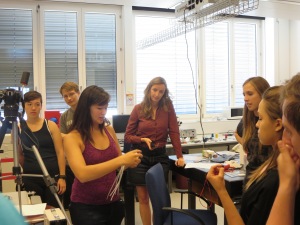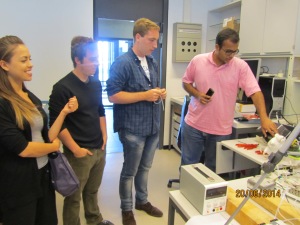Weekly Lab Tours
The EPFL research internship places students in a unique setting, where the departments are extraordinarily interdisciplinary. When I first arrived, I began touring labs on my own, eager to find out more about ongoing work at EPFL. However, after conversations with other students, I realized that they too were interested in pushing the boundaries of their current knowledge. This curiosity is a characteristic of the group that I deeply respect, and in retrospect it could almost be predicted from people who are willing to uproot and relocate overseas for an entire summer.
From these experiences, I proposed a series of lab tours. Each week, a student leads his/her peers through an overview of ongoing work, giving the rest of us a chance to see what is going on outside the walls of our own labs. I am happy that people were receptive to these tours, because it exposes everyone to new information, inspiration, and ideas. On the flip side, it’s also a fantastic opportunity for the presenters to further develop their speaking skills and obtain a holistic picture of their lab. For me, it’s wonderful to see how diverse my cohort’s interests are, and to be able to learn about topics that I otherwise would not have a connection to.
Below are some pictures from when Manan, Jessica, and I presented the Reconfigurable Robotics Lab:
Jessica, describing how pneumatic actuators behave.
Manan, explaining his work on the rat exoskeleton.
Ben, presenting an overview of the lab.
Benjamin Shih, Carnegie Mellon University
Reconfigurable Robotics Lab @ EPFL
Original post: http://epflresearchinternships.org/2014/06/29/weekly-lab-tours/
Reconfigurable Robotics Lab @ EPFL


